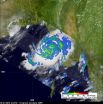(Press-News.org) Rice University has created a Green Carbon Center to bring the benefits offered by oil, gas, coal, wind, solar, geothermal, biomass and other energy sources together in a way that will not only help ensure the world's energy future but also provide a means to recycle carbon dioxide into useful products.
Whether or not one believes in anthropogenic climate change, the fact is humans are throwing away a potentially valuable resource with every ton of carbon dioxide released into the atmosphere, said James Tour, Rice's T.T. and W.F. Chao Chair in Chemistry as well as a professor of mechanical engineering and materials science and of computer science. Far from being a villain in the global warming debate, carbon will be a boon if the world can learn to use it well, he said.
"The key is to turn carbon dioxide into a useful material so it's no longer waste," he said. "We want the center to partner with energy companies -- including oil, natural gas and coal -- to make carbon a profitable resource."
A number of strategies are detailed in a paper in today's online edition of Nature Materials by Tour, Vicki Colvin, Rice's Pitzer-Schlumberger Professor of Chemistry and of chemical and biomolecular engineering, and Carter Kittrell, a Rice research scientist.
Tour said the paper presents a taste of what Rice's new center intends to be: a think tank for ideas about the future of energy with a focus on green carbon and the technological know-how to back it up. As part of Rice's Richard E. Smalley Institute for Nanoscale Science and Technology, the Green Carbon Center will draw upon the combined knowledge of the university's nanotechnology experts, for whom the development of clean and plentiful energy is a priority.
"Eighty-five percent of our country's energy comes from fossil fuels, and Houston is the world capital of the industry that makes and produces and transports those fossil fuels to all of us," Colvin said. "So we are in a unique position as the leading university in Texas to transform that industry, to develop it in a green way, to make it sustainable and to teach people that just because it's carbon doesn't mean it has an environmental consequence, but it can in fact help us transition to a renewable energy economy of the future."
"The whole idea," Tour added, "is to lower the carbon dioxide footprint and to show you don't have to get rid of anybody's energy source.
"We want to say to the oil and gas and coal companies that even as we go to renewable forms of energy, we need you. We need oil for all of our manufacturable products -- plastics and fibers and building materials," he said. "We need coal for syngas and for the manufacture of chemical compounds. And we need natural gas to provide energy at least into the next century, as well as for the production of hydrogen."
The Rice researchers wrote in Nature Materials that the rapid expansion of solar and wind energy and the promise of a hydrogen-based energy economy do not negate the continuing, long-term need for carbon-based energy, particularly since so many American jobs depend on the digging, drilling and distribution of fossil fuels.
They suggested carbon dioxide separated from hydrogen through steam methane reformation could either be repurposed immediately as a basic feedstock for chemicals or sequestered temporarily in tapped-out oil wells, which would hold vast amounts. Compressed and liquefied carbon could even replace another precious resource -- water -- to enhance oil and gas recovery.
"It costs a lot to capture carbon dioxide and pump it underground, and that can negate the advantages of sequestration," Tour said. "But solar and wind power could replace coal-fired boilers to compress and transport carbon dioxide."
If an efficient catalytic process can be developed, water-based conversion of carbon dioxide back to methanol, formaldehyde or other small molecules "would be a tremendous scientific advance for humanity," the authors wrote.
They also noted a potential market for carbon dioxide in dry cleaning, where it could replace harmful chlorocarbons, and as a refrigerant to replace materials more than 1,000 times as potent as greenhouse gases.
###
Related materials:
Read the Nature Materials article at http://www.nature.com/nmat/journal/v9/n11/full/nmat2887.html
Visit the Green Carbon Center at http://greencarbon.rice.edu.
View a video about the center at http://www.youtube.com/watch?v=ieBggmJVK2A
Located in Houston, Rice University is consistently ranked one of America's best teaching and research universities. Known for its "unconventional wisdom," Rice is distinguished by its: size -- 3,279 undergraduates and 2,277 graduate students; selectivity -- 12 applicants for each place in the freshman class; resources -- an undergraduate student-to-faculty ratio of 5-to-1; sixth largest endowment per student among American private research universities; residential college system, which builds communities that are both close-knit and diverse; and collaborative culture, which crosses disciplines, integrates teaching and research, and intermingles undergraduate and graduate work.
END
Mount Sinai researchers have discovered that microglia, the immune cells that reside in the brain, have a unique origin and are formed shortly after conception. It was previously thought that microglia originated at the same time as macrophages, which are other immune cells that are thought to develop at birth. This groundbreaking discovery has the potential to lead to future treatments of degenerative brain diseases such as Alzheimer's and autoimmune diseases such as multiple sclerosis. The study is published online October 21 in Science Express.
Microglia are thought ...
Chronic lymphocytic leukemia (CLL) cells survive and thrive not just by their own innate wiles, but by also acquiring aid and support from host cells in their surrounding environment. In a paper published online this week in The Proceedings of National Academy of Sciences, an international team of researchers led by cancer specialists at the University of California San Diego School of Medicine and the Moores UCSD Cancer Center identify a particular relationship that can promote notably aggressive leukemias and lymphomas.
"The microenvironment is the term used to describe ...
The following are highlights of new cancer research being released at the American Society for Radiation Oncology's (ASTRO) 52nd Annual Meeting to be held October 31 through November 4, 2010, in San Diego.
For full copies of the abstracts and press releases, contact Nicole Napoli at nicolen@astro.org or Beth Bukata at bethb@astro.org. Studies are embargoed until October 25, 2010, at 1:00 p.m. Eastern time.
Adding radiation to hormone therapy for prostate cancer treatment will increase survival chances
Prostate cancer patients who are treated with a combination of hormone ...
HOUSTON, Oct. 22, 2010 – Researchers can spend entire careers producing outstanding work but still not see their efforts featured in the pages of Science, one of the world's most prestigious scientific journals. That won't be the case, though, for two junior faculty members in engineering at the University of Houston (UH).
Jacinta Conrad and Jeff Rimer, both assistant professors in Cullen College of Engineering's department of chemical and biomolecular engineering, had papers featured in consecutive issues of Science this month.
"Jacinta and Jeff are both extremely ...
What's the mechanism that makes a political video go viral? What causes a video clip to spread from a few people to millions, sometimes in a matter of hours? Is it a top-down process led by elite gatekeepers or bottoms up, driven by people at the grass roots? And how do blogs affect the life cycle of a viral video?
Common wisdom might suggest that a posse of political blogs triggers virality, but research from the University of Washington indicates it often springs from just two elite blogs followed by top general interest outlets that aren't considered political.
A ...
A new meta-analysis study, "The Neuroimaging of Love," conducted by Syracuse University Professor Stephanie Ortigue, reveals that falling in love can elicit not only the same euphoric feeling as using cocaine, but also affects intellectual areas of the brain. Researchers also found falling in love only takes about a fifth of a second.
Ortigue is an assistant professor of psychology and an adjunct assistant professor of neurology, both in The College of Arts and Sciences at Syracuse University.
Results from Ortigue's team revealed when a person falls in love, 12 areas ...
Typhoon Megi has run into winds that are weakening the storm, but it is forecast to make landfall in southeastern China late at night (EDT) on Oct. 22 (11 a.m. local time Hong Kong, Oct. 23) as a Category One Typhoon. NASA satellites have been monitoring the storm's rainfall, changing cloud cover, and changing eye as it weakens.
The Tropical Rainfall Measuring Mission (TRMM) satellite traveled directly above Megi on October 21 at 1401 UTC (10:01 a.m. EDT) when wind speeds were estimated to be about 100 knots (~115 mph). Megi caused at least 27 deaths in the Philippines ...
Tropical Storm 04B grew quickly into powerful Cyclone Giri and was making landfall in Burma today as a powerful Category Four Cyclone on the Saffir-Simpson scale. NASA's TRMM satellite noticed that the storm contained some heavy rainfall in addition to the powerful winds.
Giri is the second tropical cyclone of 2010 to form in the Bay of Bengal and was seen by the Tropical Rainfall Measuring Mission (TRMM) satellite. Cyclone Giri was seen clearly by the TRMM satellite twice on Oct. 21. The first good view was at 1534 UTC (11:34 a.m. EDT) when TRMM data showed a very well ...
The GOES-13 satellite is watching Tropical Storm Richard work its way through the western Caribbean, and residents of eastern Honduras, Guatemala, Belize and Mexico's Yucatan Peninsula are bracing for its impacts as it is forecast to strengthen to hurricane status this weekend. Richard is going to be a big rainmaker for those countries.
The Geostationary Operational Environmental Satellite called GOES-13 captured a visible image of Tropical Storm Richard at 1732 UTC (1:32 p.m. EDT) on Oct. 22. GOES satellites are managed by NOAA. NASA's GOES Project at NASA's Goddard ...
2010-10-22 -- Global Intelligence Alliance (GIA), a global strategic market intelligence and advisory group, has announced an Emerging Markets Monitoring Service bundle that specializes in providing local intelligence on Brazil, Russia, India and China, as well as other international growth markets such as Chile, Mexico, The United Arab Emirates, Vietnam and more.
Through its 13 local offices and native-speaking consultants in 100 markets, GIA's Emerging Markets Monitoring Service will assist clients with:
• Market entry intelligence; supporting planning to set ...



